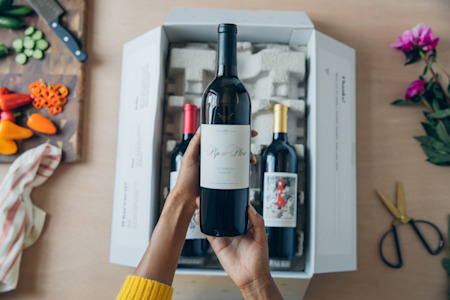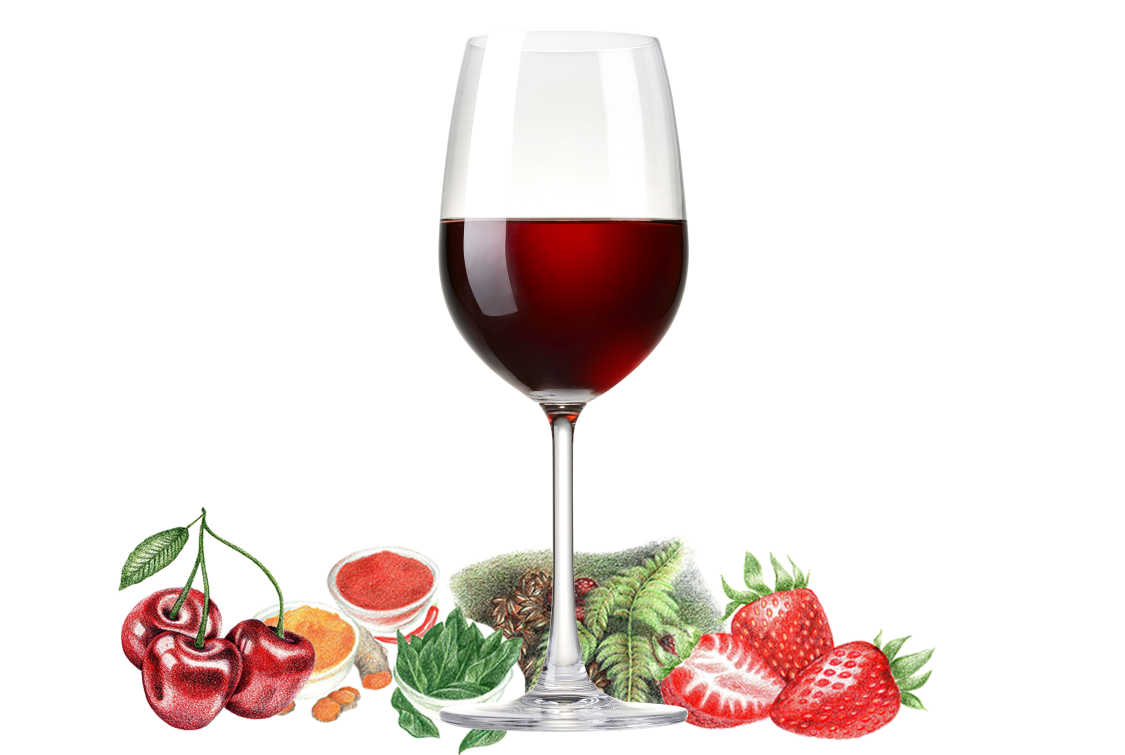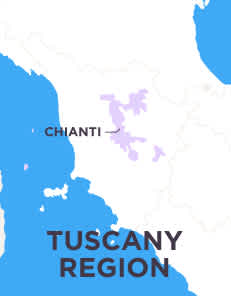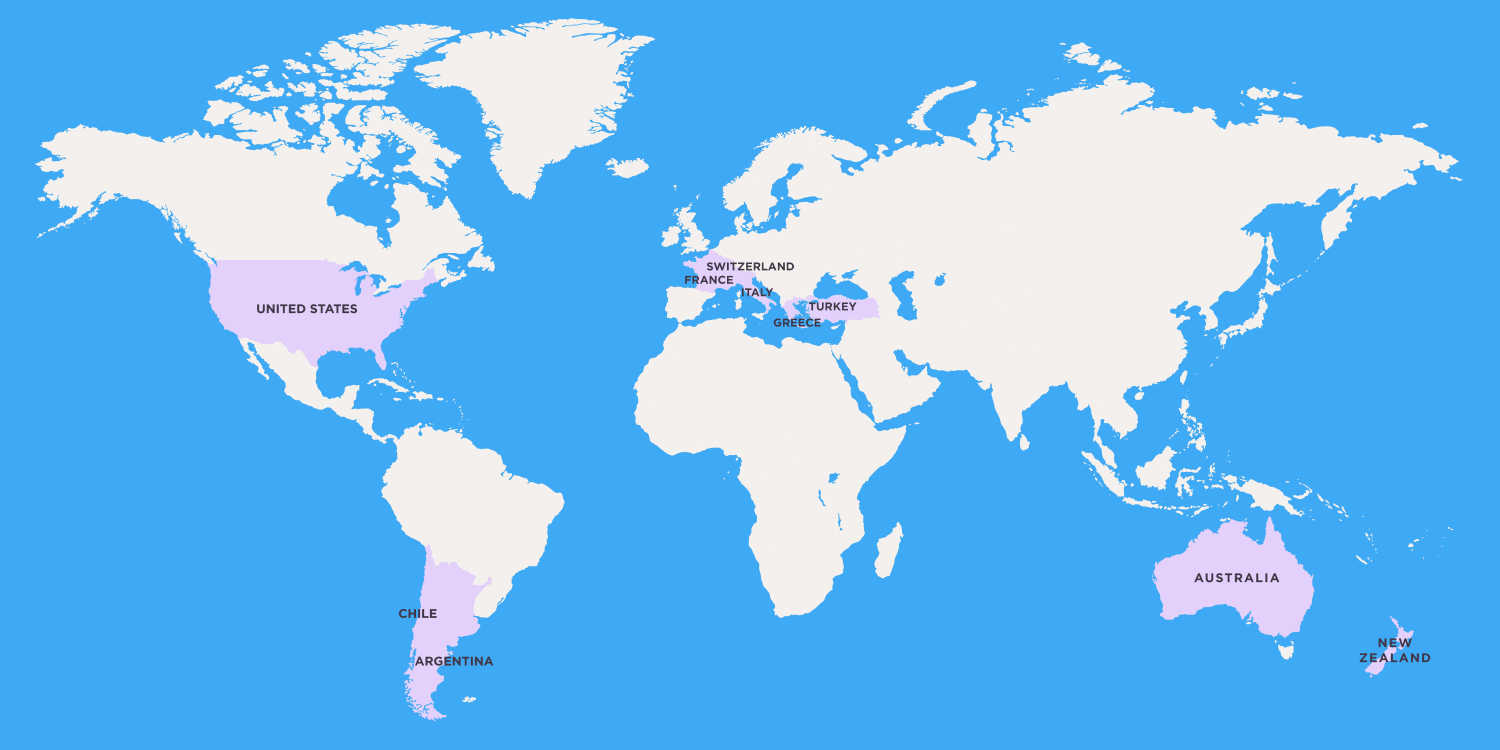Chianti (Sangiovese)
Taste the subtleties of a well made Italian red wine in Chianti
Squat, straw covered bottles were an Italian-American restaurant staple for decades, making Chianti the go-to wine for spaghetti and meatballs served on red-and-white-checkerboard tablecloths. But with roots dating back to the 1300s in Tuscany, Chianti is so much more than an old-school Italian restaurant wine.
Chianti’s name comes from the region in which it was born, the sunny, sloping hills of Tuscany in central Italy. This area is known for both excellent olive oils and some of the world’s most beloved Italian wines including Brunello di Montalcino, Vino Nobile di Montepulciano and the cult favorite "Super Tuscans" that gained popularity in the 1990s.
Chianti DOCG (Denominazione di Origine Controllata e Garantita, the regulations that govern the production of Italian wines) have strict rules when it comes to how and where Chianti is made. Officially recognized Chiantis must be made from a minimum of 70% Sangiovese grapes, and while blending in other grapes like Merlot, Syrah and Cabernet isn’t frowned upon, winemakers in the region often stick with a pure, all Sangiovese product.
Within the wine region four classifications of Chiantis are available, Chianti i.e. an everyday sipper made with a minimum of 70% Sangiovese grapes, Chianti Classico wines, the more refined version of the wine made from 80% Sangiovese aged for at least ten months, and Chianti Classico Riserva, bottles that have been aged for more than 24 months. The fourth classification is the newly introduced Chianti Classico Gran Selezione, a top tier product which requires a minimum of 30 months aging time and an increased alcohol content.

Take Our Quiz Today
Get award-winning delicious wines from all over the world shipped straight to your door. Take the quiz to get the perfect pairings for your holiday season.
Take The Quiz TodayIN THIS ARTICLE:
Want personalized wines?
Get your first box of wines for $44.95 + free shipping.

History of Chianti
Touching the provinces of Arezzo, Florence and Siena the forward thinking Chianti region made a name for itself when a group of vintners and merchants from the area got together and formed the Lega del Chianti, a co-op of sorts designed to promote Chianti wines. It’s worth noting that the original wines of the Lega were predominantly made with white grapes.
Fun Fact
The gallo nero, or black rooster seal that graces the label of all bottles of Chianti comes from a time when the region was embroiled in a border dispute. The rooster acted as an alarm to wake the horsemen that protected the area’s borders from being overtaken.
As the region’s winemaking culture thrived, the Grand Duke of Tuscany made the executive decision that the towns of Radda, Gaiole and Castellina were by law, the only places where the wine was able to be labelled as such. To this day, these are the three towns that make up Chianti Classico DOCG.
At the time, the proprietary blend of grapes that made up Chianti were Sangiovese along with a local red grape known as Canaiolo and white Malvasia. Over the years eight subregions of Chianti were introduced, all with their own unique style of winemaking.
What does Chianti taste like?
Due to the vast scale of the Chianti region, describing the nuances of these wines is hardly straightforward. Within the 100 plus square miles and multiple sub-zones that make up Chianti, wines vary greatly from bottles made in Colli Aretini made for everyday drinking to the cellar worthy Superiores made within the Chianti Classico DOCG.
In general the wines have dark fruits and savory, earthy notes.
Chianti Characteristics
The majority of Chianti’s characteristics are derived from the inky bunches of Sangiovese from which it is made. These thin-skinned grapes are high in both acid and tannins, making for medium-bodied wines that can stand up to oak aging. Younger Chiantis tend to be lighter and more red fruit-forward, while higher quality bottles built for aging become earthier and more savory over the years. Winemakers who choose to add international varieties such as Merlot, Syrah and Cabernet Sauvignon are looking to soften Sangiovese’s natural tannins and acidity by rounding out flavors and mouthfeel.
Sangiovese grapes often taste fresh with hints of strawberry, spice, earth, and sour cherry, and after time in the barrel, it can become highly oaky and feature hints of tar.
Fun Fact
The straw baskets woven around the base of some bottles of Chianti are known as fiascos. They were originally introduced to add a level base for hand-blown glass bottles which typically had a round bottom.
Chianti Nutritional Facts
The nutritional value of Chianti depends on two factors: alcohol and sugar. Depending on how ripe the grapes were when harvested and whether or not the winemaker chose to add additional sugar, Chianti’s nutritional value can change, but generally, it is on par with other dry red wines.
How to Serve and Store Chianti
Chianti is a wine that can be enjoyed both young and fresh, or depending on quality and producer, aged up to 15 plus years.
Early on, at the two to five-year mark, Chianti’s fruit-forward flavors and bright acidity thrive, and with age, these the tannins mellow and red fruit notes transition into a place of satisfying savoriness.
As is the case with most wines, the best practice is to store wines at cellar temperature, around 55 degrees Fahrenheit. Cool bottles stored out of direct light, with just enough humidity, have the potential to age into lovely examples of the style.
What to Pair with Chianti
Pairing wine has some general rules, but we think the most important rule is to drink Chianti with the food you like.
Chianti’s ever-present place in the red checkered tablecloth Italian restaurants is well earned. The wine’s high acidity and tannins make it an ideal match with tomato-heavy Italian-American classics like spaghetti and meatballs, chicken Parmesan and sausage and peppers. Closer to Chianti’s birthplace, it plays well with hearty Tuscan fare such as wild boar ragu and bistecca alla Fiorentina, a serious t-bone steak typically grilled over wood fire.
Fun Fact
In Thomas Harris’ novel, The Silence of the Lambs, cannibal psychiatrist Hannibal Lecter’s wine of choice is Amarone. The filmmakers opted to switch his famous human liver and fava beans pairing to Chianti, as they correctly assumed that this Italian wine was more widely known.
Sangiovese Wine Regions Around the World
By Italian law, Chianti can only be produced in eight Tuscan appellations including Chianti Classico, Chianti Rufina, Chianti Colli Fiorentini, Colline Pisane, Colli Aretini, Colli Senesi, Chianti Montalbano and Chianti Montespertoli.
Sangiovese, the primary grape used to blend Chianti is incredibly adaptable and has been successfully cultivated all over Italy into France, Switzerland, Turkey and Greece. Italian immigrants brought Sangiovese to the New World, from both coasts of the U.S. to Argentina, Chile, Australia and New Zealand. International iterations of Sangiovese are mostly made into still red wines, but there are some producers who are using the grapes to make bottles of vibrant rosé and sparkling varieties.
IN THIS ARTICLE
Want personalized wines?
Get your first box of wines for $44.95 + free shipping.


WinePrint™ by Firstleaf
Are you looking to learn more about your wine preferences? Check out our Wine Print for an in-depth look at your personal tasting profile. Discover your favorite wines, varietals, regions, and tasting notes and get personalized recommendations wherever you are.
Learn More

